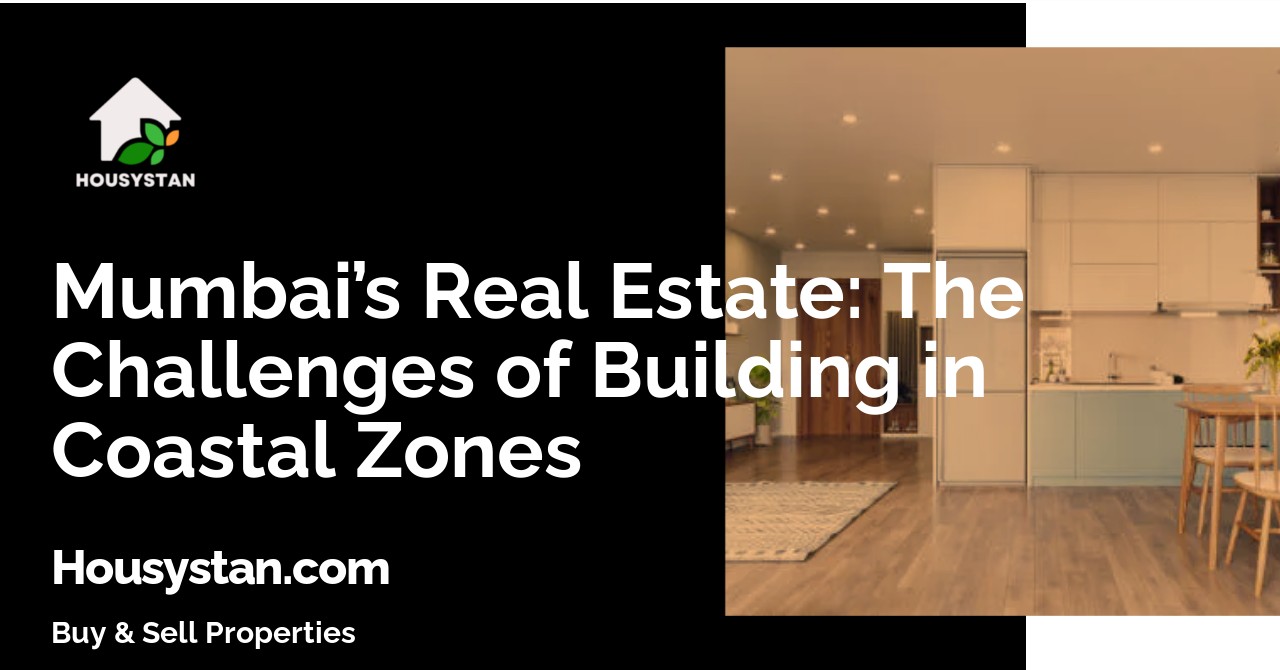Mumbai’s Real Estate: The Challenges of Building in Coastal Zones
Read latest blogs and articles from Housystan

The Information mentioned here was last updated on:
27/11/2025Mumbai’s Real Estate: Navigating the Complexities of Coastal Zone Development
Mumbai, India’s financial hub, boasts an unparalleled coastal setting along the Arabian Sea. This unique geography, while offering breathtaking views and immense investment potential, presents distinct challenges for real estate developers and investors. Building in Mumbai’s coastal zones demands a nuanced understanding of environmental regulations, technical constraints, and market dynamics. As the city expands to accommodate its growing population, the intersection of urban aspirations and ecological sensitivity becomes increasingly significant.
One of the primary challenges in Mumbai’s coastal real estate market stems from stringent regulations imposed by the Coastal Regulation Zone (CRZ) norms. Enforced to protect fragile ecosystems, these rules limit construction activities near the shoreline. Developers must carefully navigate setback requirements, permissible building heights, and floor space indices. Securing permissions from authorities like the Maharashtra Coastal Zone Management Authority requires meticulous planning and thorough documentation, often resulting in extended project timelines.
- Verified Tenants/Buyers
- Unlimited Property Listing
- Zero subscription/charges fee
In addition to regulatory hurdles, the city’s geography poses technical difficulties. High water tables, saline soil conditions, and the risk of flooding during monsoon season necessitate advanced engineering solutions. Builders must invest in robust foundation systems, effective waterproofing, and innovative drainage infrastructure to ensure structural stability and long-term durability. These factors can significantly increase construction costs, impacting project feasibility and pricing for end buyers.
Environmental sustainability is another key concern. Developers are now adopting eco-friendly practices, such as rainwater harvesting, energy-efficient designs, and green landscaping, to minimize ecological impact and comply with evolving guidelines. Integrating these features not only supports Mumbai’s environmental goals but also enhances property value and appeal among conscious buyers.
From a market perspective, demand for coastal properties remains strong, fueled by the promise of scenic vistas and premium lifestyles. Neighborhoods like Worli, Bandra, and Juhu attract both domestic and international investors. However, limited land availability and high compliance costs often translate into premium pricing, making affordability a challenge for many residents.
In summary, building in Mumbai’s coastal zones requires a delicate balance between development ambitions and environmental stewardship. By embracing regulatory compliance, technological innovation, and sustainable practices, stakeholders can shape a resilient real estate future along the city’s iconic shoreline, ensuring Mumbai continues to thrive as a global coastal metropolis.